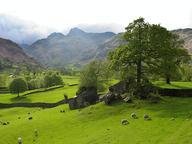Quiz Answer Key and Fun Facts
1. Which of these popular soap operas is set in Weatherfield, a fictional part of Manchester?
2. Manchester is the centre of a thriving music scene, and many great and talented bands have their roots here. Which of the following did not come from Manchester?
3. The Romans founded a small settlement called Mamuciam where the city of Manchester now stands. Which part of the modern-day city can the remains of a Roman fort be found?
4. For much of its existence Manchester was a particularly unimportant place. By the time of the Norman invasion in 1066 it was only a district of which neighbouring area?
5. During the English Civil War Manchester was a hotbed of support for the monarchy. True or False?
6. In the 18th century Manchester became the centre of a canal network that stretched across the country. However, it was one canal in particular that is widely seen as kick-starting this development. Which one was it?
7. Manchester became a great industrial city in the 19th century, and found itself at the forefront of the industrial revolution. What industry dominated the city throughout this period?
8. This railway, opened in 1830, was the first to be built to carry both passengers and freight and marked the beginning of the massive investment in railways that characterised the 19th century. It ran from Manchester to which other English city?
9. When building the new railways, engineers had to lay lines in the heavily built up city centre. This was difficult, and laying them at ground level would have disrupted traffic throughout the city centre. What solution, still in use today, did the railway builders come up with?
10. Manchester also witnessed the darker side of the industrial revolution and was home to some of the worst conditions for the working classes in Britain. What was especially prevalent during this period?
11. Which daily newspaper was established in 1821 in Manchester and had its roots in the reformist movement of the time?
12. During the 19th and 20th centuries Manchester was a hotbed of radicalism and reform movements. It was also home to Emmeline and Christabel Pankhurst, famous campaigners for women's rights. In which year were women in Britain given equal voting rights to men?
13. In 1996 an IRA bomb devastated the city centre, with fortunately no fatalities. What happened to the Old Wellington Inn and Sinclair's Oyster Bar, the two oldest buildings in the city during the reconstruction effort?
14. Which of these upland ranges is closest to Manchester?
15. What major sporting event did Manchester host in the summer of 2002?
16. Ian Brown (former lead singer of The Stone Roses) once said of Manchester "It's got everything except a _____". What is the missing word?
17. Unfortunately Manchester also suffers from massive crime problems. By what name is the city sometimes referred to?
18. In year 2000, how many people lived in the Greater Manchester Area?
19. Today Manchester is most famous for football. Manchester United, arguably one of the greatest football teams in history, is known and supported across the globe. Their 2003 league victory was the 15th time they have been league champions. True or False?
20. Salford Quays has recently been redeveloped, including the building of the Lowry art gallery to display works of the local painter Laurence Stephen Lowry. Which national museum opened a new building opposite the Lowry Centre as part of this redevelopment?
Source: Author
magicbadger
This quiz was reviewed by FunTrivia editor
minch before going online.
Any errors found in FunTrivia content are routinely corrected through our feedback system.


